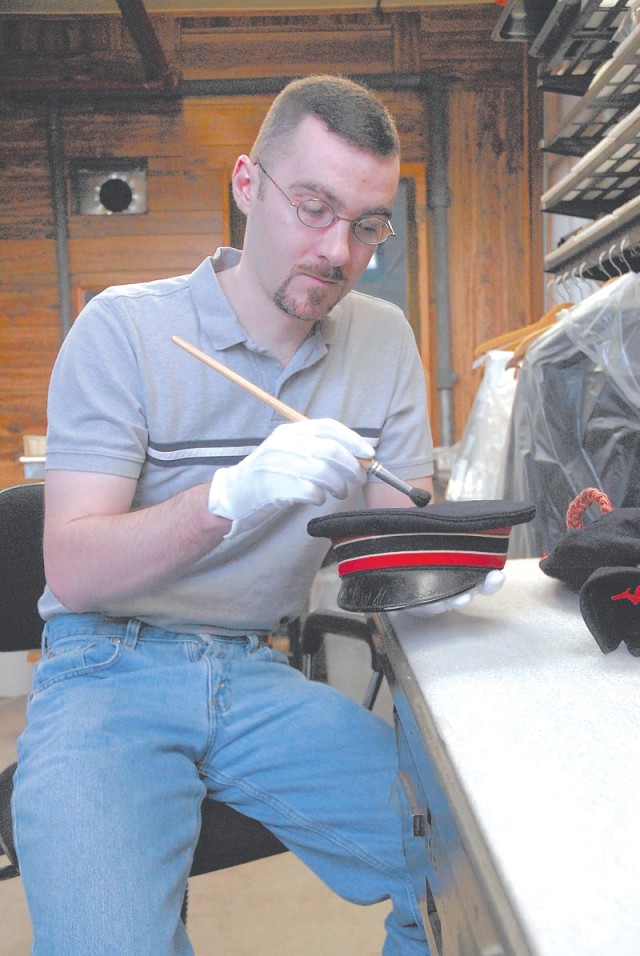FORT JACKSON, S.C. (Army News Service, March 29, 2007) - When a natural disaster strikes, whether a hurricane, fire or earthquake, it can take lives and demolish people's homes, their communities and their livelihoods. It can also wipe out history - destroying such items as famous architecture, works of art and historical documents.
Brandon Wiegand, a volunteer at the Fort Jackson Museum, will soon be one of those called to ensure history doesn't become just a fading memory. He's been chosen to become a member of a Collections Emergency Response Team.
"There's a great need for the work. Hurricane Katrina taught us that," Wiegand said.
In May, he will be trained by the American Institute for Conservation to be one of 60 people in the United States who can be dispatched to a location to help save and preserve cultural collections when disaster strikes.
"Preserving historical property can range from saving (or restoring) paintings, to fabric, to papers," Wiegand said.
While the majority of people selected for the response team are professional conservators, Wiegand has no formal training. He is currently working on his master's degree at Webster University. Wiegand said that since he grew up in a military family he has always had a great interest in military history, which he has pursued on his own.
"I was shocked such a prestigious organization would take my personal training, which has been self-taught and through personal experience rather than through formalized training," he said. "Normally you would have to have a master's (degree) in restoration to be chosen for a position like this."
Wiegand's selection doesn't surprise K.D. Tyree, collections manager for the Fort Jackson Museum. She's worked with Wiegand for the past five months.
"They (AIC) obviously understood Brandon's expertise with military history enough to include him in their very elite group," Tyree said. "When things get destroyed, artifacts get separated from their records. What Brandon can do is pick up an item and tell you what time frame it is from just based on the stitching and thread type."
Once he completes his training, Wiegand will have to be ready to respond quickly. The first 48 hours are critical in saving documents. After two days mold begins to develop, deterioration accelerates and recovery becomes increasingly difficult.
"If you react quickly enough you can actually preserve the artifacts or mitigate the damage to them," Wiegand said. "Even if there has been damage to something it can still be restored."
(Mike A. Glasch writes for the Fort Jackson "Leader.")


Social Sharing